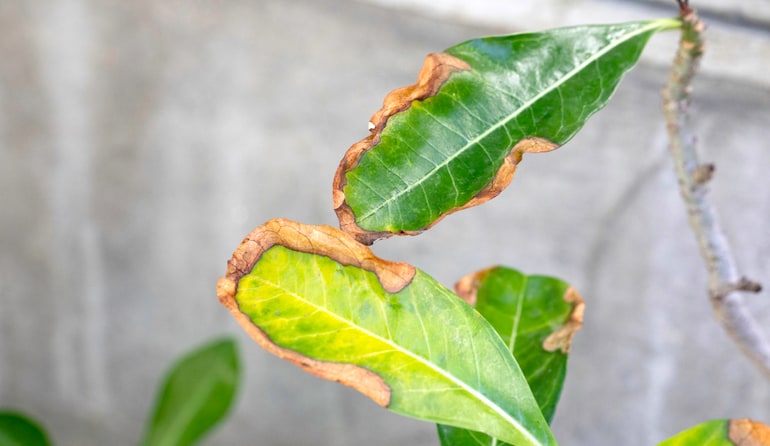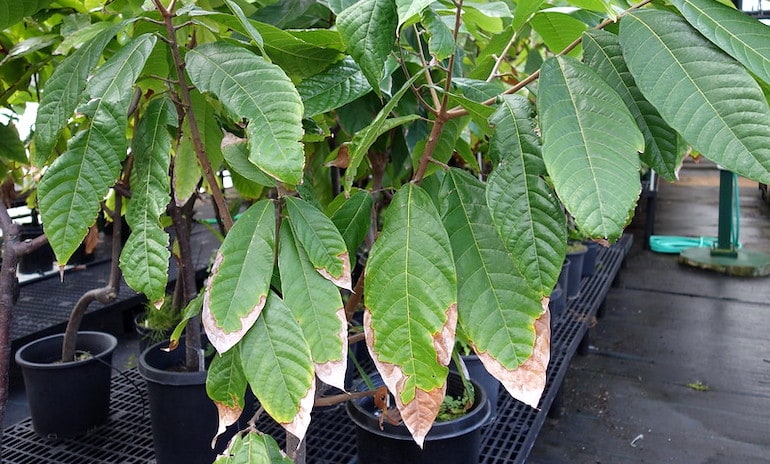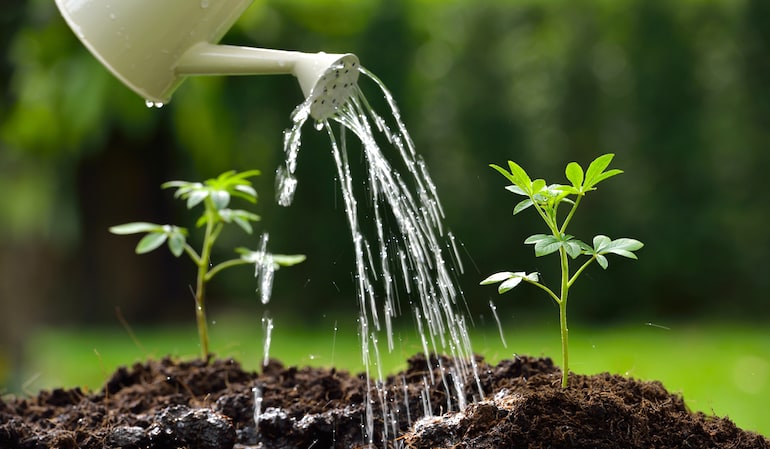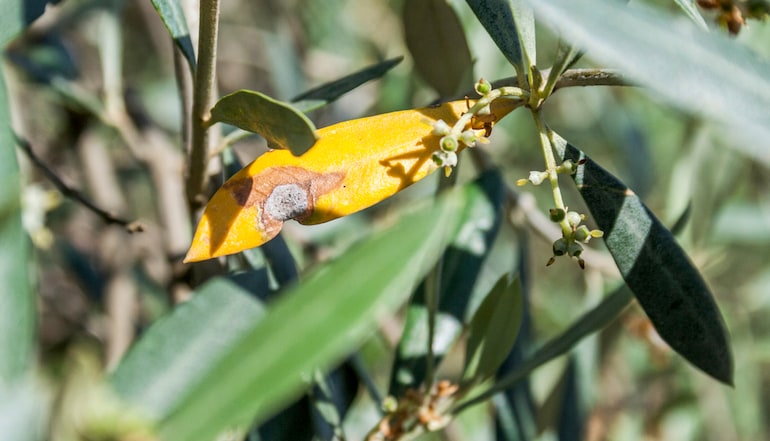Garden diseases - Leaf scorch

Leaf scorch isn't typically a sign of disease or infection
Image: sruilk/Shutterstock
Scorch isn’t usually a sign of disease, but rather that plants are struggling to cope in their environment. If it’s too exposed to hot, windy, or dry conditions, there are too few nutrients in the soil, or there’s chemical injury from fertilizers or de-icing salt – scorch is likely. Chemical burns can be fatal, and fruiting plants are unlikely to produce good harvests when stressed by their environment, but in an otherwise healthy plant, it’s unlikely that scorch will cause much more than cosmetic damage.
If you notice drying that seems to spread from the leaf tips inwards, chances are that you have a case of scorch. Here’s how to recognise and deal with it.
What is leaf scorch?

Leaf scorch affects the tips of the leaves first
Image: Scot Nelson
When there’s insufficient water and /or nutrients in the soil, it’s the plant’s extremities that suffer first. Deprived of hydration and nutrients, the very tips of the leaves begin to dry out. When the problem is an over-exposed position, the hot sun or drying wind evaporates more moisture from the leaf surface than the plant can replace, drying the leaf surface and turning it brown.
Chemicals can burn roots, affecting the plant’s ability to extract water and nutrients from the soil to keep the plant healthy. Damage tends to show at the leaf tips first, turning them brown.
In extreme cases, whole leaves wither and turn brown – rarely, scorch will kill a plant, but not if you react promptly.
What to do about leaf scorch

Simple fixes can limit the damage of leaf scorch
Image: amenic181/Shutterstock
Once you’ve identified that your plants are suffering from environmental stress, resolving the problem should be enough to prevent scorch from getting any worse, or affecting new leaves.
- In dry conditions, make sure you provide enough water, watering the roots rather than the leaves. Trap more moisture in the soil by applying a mulch, but do be aware when watering, that you need to do more than wet the top layer – you need to apply sufficient water for it to penetrate through to the soil beneath. This is particularly important when deep-watering trees.
- Windy / sunny conditions. Try planting a wind-breaking hedge, build a wall, or put up fencing to deflect the wind.
- If the sun is damaging your plants, consider moving them to a less exposed location. Otherwise, companion planting works well with taller or more foliage dense plants providing cover for shade-loving plants.
- Apply fertiliser sparingly in accordance with the manufacturer’s instructions. When fertilising trees and shrubs, do it in the autumn or early spring when roots are less active – avoid doing it during the summer when drier conditions are likely to concentrate the chemical in the soil. Avoid applying lawn fertilizer too close to your trees, and always water it in well. If you do suspect chemical poisoning, irrigating the soil continuously for 24 hours may help to leach the toxins away.
- Plan your planting more carefully. If you garden in an exposed location – like on the coast, or in upland areas, keep the conditions in mind when choosing what to grow.
Are there diseases that cause leaf scorch?

It's worth keeping in mind that some infections can cause leaf scorch
Image: Shutterstock
Yes there are. It’s less common but there are specific diseases that produce a scorch-like appearance.
- Iris leaf scorch. Bacterial infection that gives leaves a scorch-like appearance. Dig out and burn or dispose of the affected section of the rhizome.
- Cherry leaf scorch. A fungal infection – burn or dispose of fallen leaves to prevent its spread.
- Xylella fastidiosa. A disease that causes dieback similar to scorch, experts describethis fungal disease as having the potential to “make ash dieback look like a walk in the park”. It hasn’t been spotted in the UK yet, but experts are very concerned that having devastated olives, vines, and lavender in Europe, it will turn up here next.
Though, rarely, scorch-like symptoms are the result of an infection, it’s usually the result of physiological stress. By working to give your plants the ideal growing conditions, most cases of scorch are easy to remedy.
Other pages you might like
See all pests & diseases guides
Individual guides
Diseases
- Apple scab
- Bacterial canker
- Blackleg
- Blossom wilt
- Botrytis
- Brown rot
- Clematis wilt
- Downy mildew
- Fungal disease
- Honey fungus
- Leaf spot
- Leek rust
- Lily disease
- Peach leaf curl
- Pear rust
- Phytophthora root rot
- Potato & tomato blight
- Powdery mildew
- Silver leaf fungus
- Tomato greenback
- Tomato leaf curl
- Tomato stem canker







